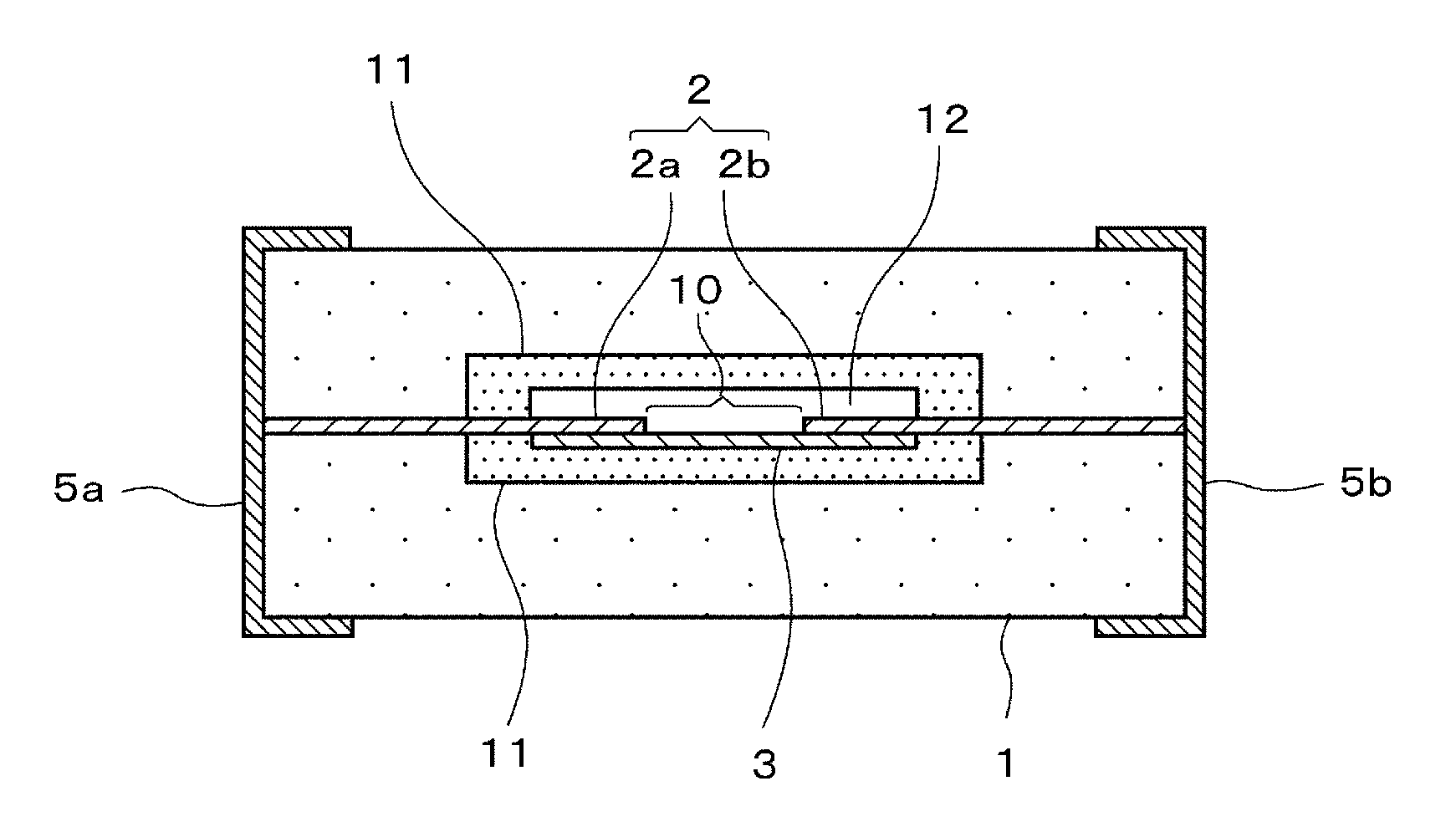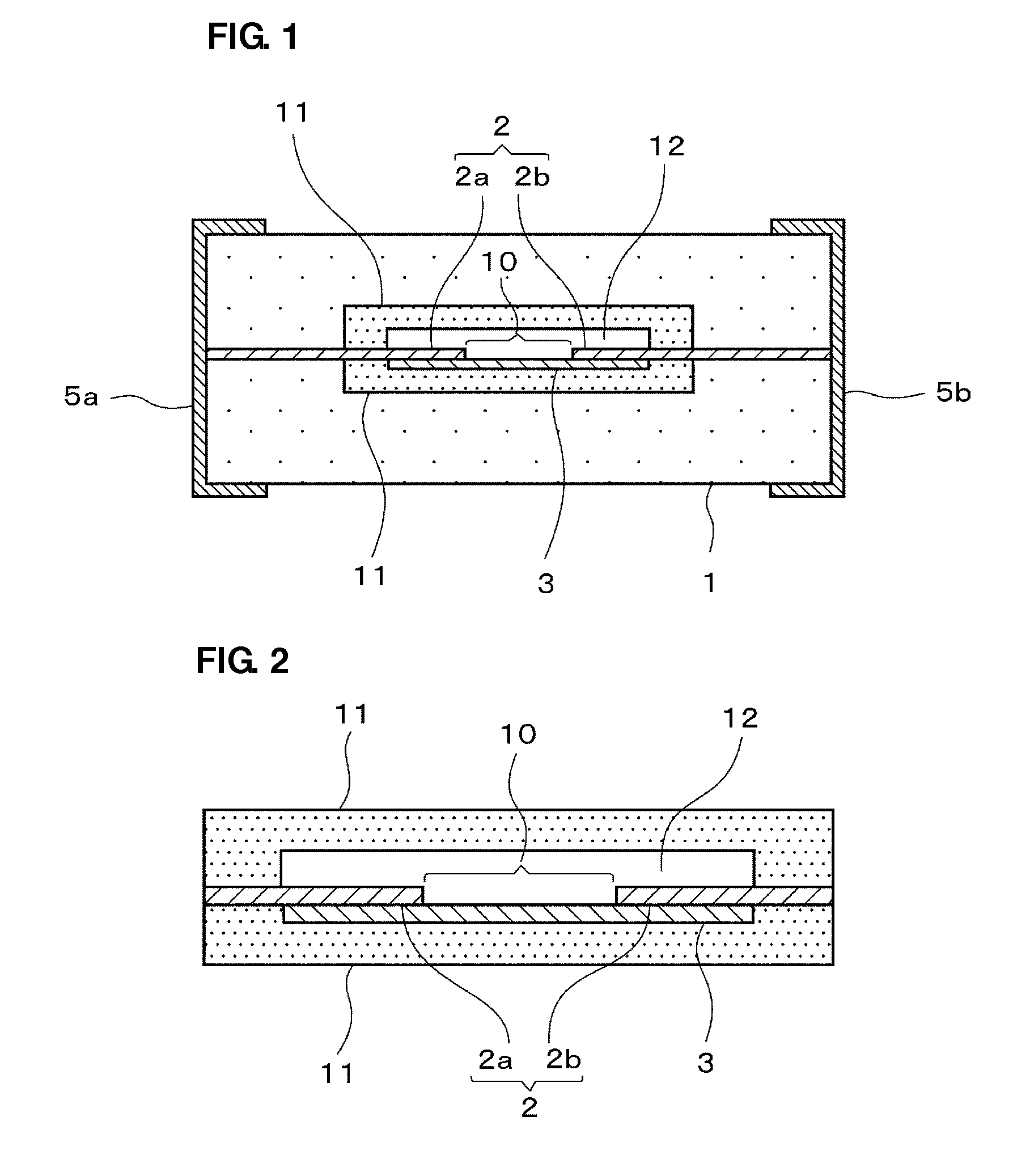ESD protection device and manufacturing method therefor
a protection device and manufacturing method technology, applied in the direction of overvoltage protection resistors, spark plugs, spark gap details, etc., can solve the problems of increased variation in product characteristics, difficult to provide high-reliability products, and difficult to create paths
- Summary
- Abstract
- Description
- Claims
- Application Information
AI Technical Summary
Benefits of technology
Problems solved by technology
Method used
Image
Examples
Embodiment Construction
[0031]With reference to preferred embodiments of the present invention, features of the present invention will be described below in more detail.
[0032]FIG. 1 is a cross-sectional view schematically illustrating the structure of an ESD protection device according to a preferred embodiment of the present invention, FIG. 2 is an enlarged front cross-sectional view illustrating an enlarged main section of the ESD protection device, and FIG. 3 is a plan cross-sectional view of the ESD protection device according to a preferred embodiment of the present invention.
[0033]This ESD protection device includes, as shown in FIGS. 1 to 3, a ceramic base material 1, opposed electrodes (extraction electrodes) 2 including an opposed electrode 2a on one side and an opposed electrode 2b on the other side, which are located in the same plane in the ceramic base material 1, and include ends opposed to each other, a discharge auxiliary electrode 3 in partial contact with the opposed electrode 2a on one s...
PUM
| Property | Measurement | Unit |
|---|---|---|
| thickness | aaaaa | aaaaa |
| particle diameter | aaaaa | aaaaa |
| average particle diameter | aaaaa | aaaaa |
Abstract
Description
Claims
Application Information
 Login to View More
Login to View More - R&D
- Intellectual Property
- Life Sciences
- Materials
- Tech Scout
- Unparalleled Data Quality
- Higher Quality Content
- 60% Fewer Hallucinations
Browse by: Latest US Patents, China's latest patents, Technical Efficacy Thesaurus, Application Domain, Technology Topic, Popular Technical Reports.
© 2025 PatSnap. All rights reserved.Legal|Privacy policy|Modern Slavery Act Transparency Statement|Sitemap|About US| Contact US: help@patsnap.com



